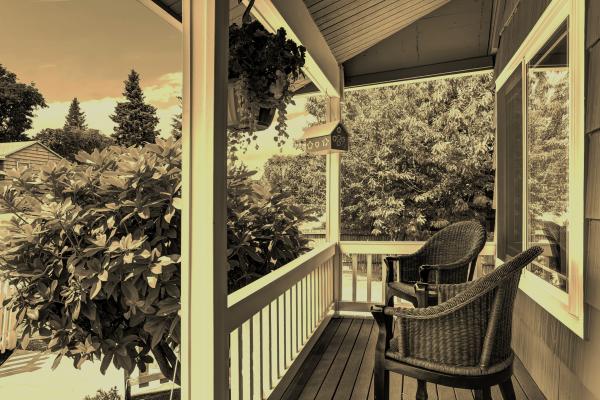IF THE SWELTERING heat were not enough to dampen the midsummer soul, D.C.’s metro system has shut down portions of its train lines for long-overdue repairs, leaving us retreating to our homes—and, if we’re lucky, our porches: the outdoor living rooms of a city.
Summer is a time when lethargy reigns, especially here in the humid semi-South. Unlike in the North, where frigid winter inculcates an obstinate determination to prove that weather won’t hold us back, the South is a respecter of heat. Come August, everything s l o w s d o w n.
There’s no better time for porches than in a humid heat, when sleepy hospitality reigns supreme. Summer is the season for public myth-shaping, when private dreams and tweeted ideologies collide on the street with other humans and the full cacophony of life lived outside. Our systemic ills are most visible in the summer: residents suffering from water shutoffs, police brutality committed and pardoned, an education system that affords some children elite summer camps and denies others a glimpse of the outdoors, the merry-go-round of ads reminding us that “summer” is skin-deep and buyable. So is our hospitality most visible—music drifting from one door to the next, neighbors sharing an extra lemonade.
In earlier decades, houses were designed for life to happen just off the street. So the living rooms of most houses in D.C. are in the front—kitchens, studies, and bathrooms in the back or on another floor altogether. The dream of safe ensconcement away from the unpredictable intrusions of neighbors or vendors is unique to suburbia—in urban design, proximity is power. Front porches, just slightly removed from the chaotic spontaneity of summer streets, are both cachet and a basic necessity—permeable culture containers waiting to capture the overflow.
Read the Full Article

